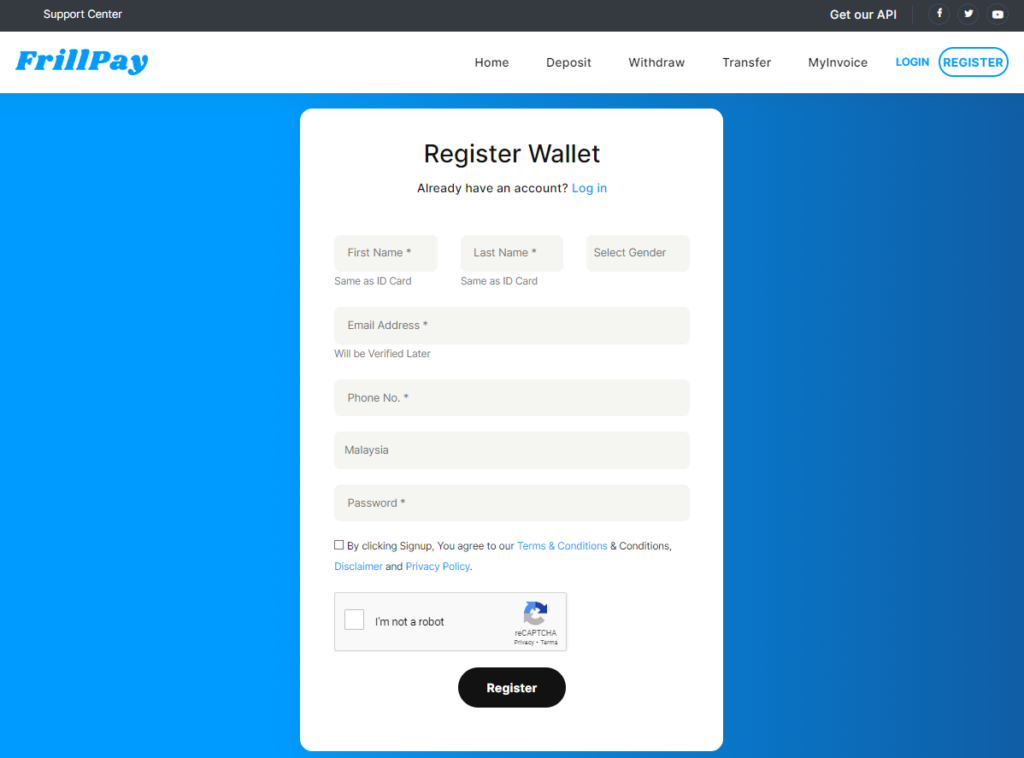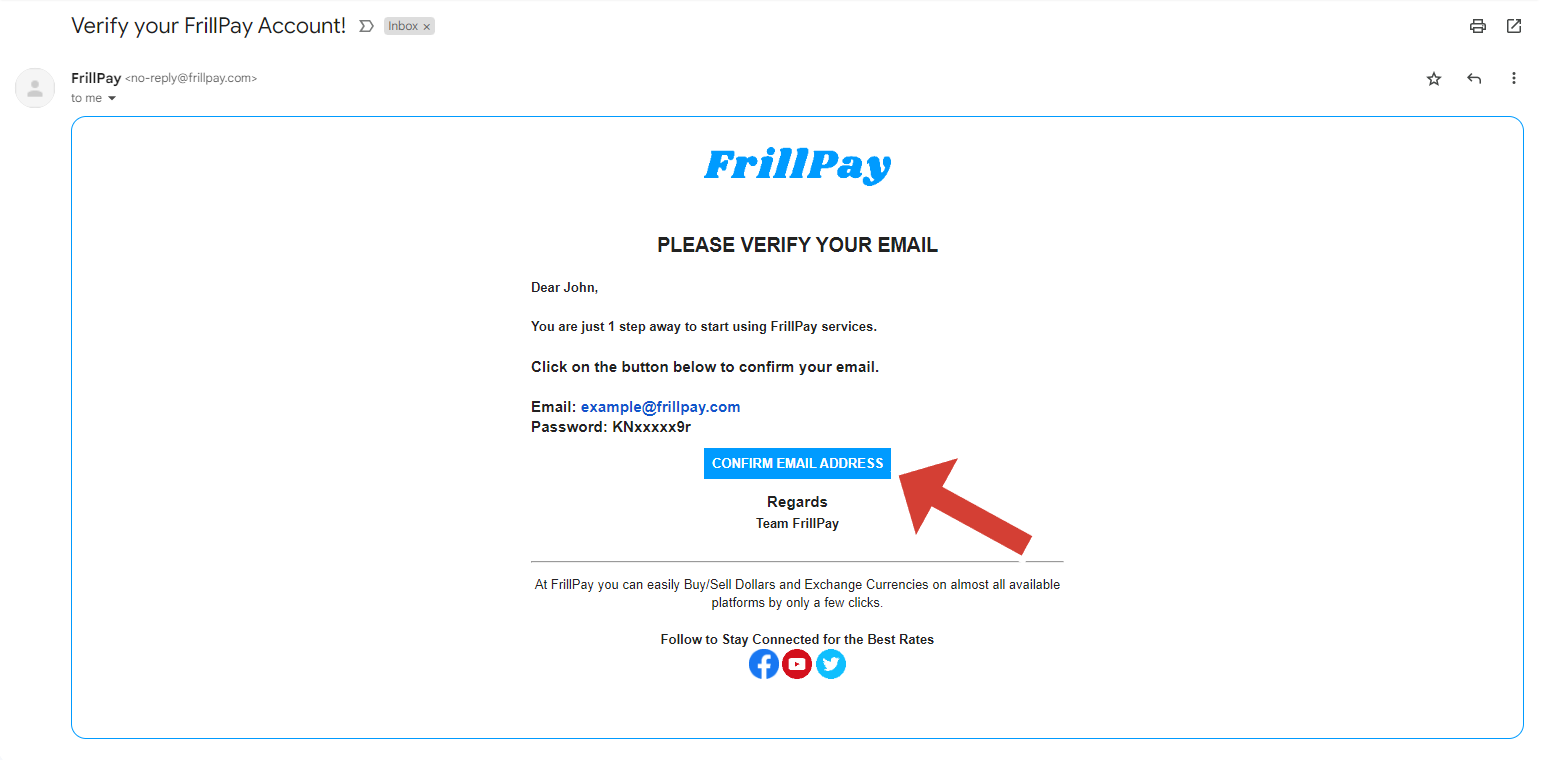Signup on FrillPay. In the dynamic world of digital finance, simplicity and security are at the forefront. FrillPay has mastered this delicate balance, offering an email verification and login process that’s not only secure but can be tailored to your preferences. In this article, we will be your personal guides through the crucial steps of email verification and logging in, and we’ll delve into the unique feature of FrillPay: the choice between two distinct methods for signup on FrillPay.
Two Sign-Up Forms: Quick Sign Up and Sign Up Page
What sets FrillPay apart is the flexibility it offers in the registration process. It recognizes that users have diverse preferences, and thus, it provides two distinct methods for signup on FrillPay to cater to your individual needs.
Quick Sign Up:
If you prefer a hassle-free registration experience, the Quick Sign Up method is the way to go. Here, you won’t need to set a password during registration. FrillPay automates this process and sends a secure password to your provided email address. It’s all about making the experience smoother for those who value simplicity.
Sign Up Page:
On the other hand, if you desire more control and security, the Sign Up Page is your choice. During registration, you’ll have the option to set your password. This method empowers you to choose a password that aligns with your security preferences.
Le’ts Signup on FrillPay now:
To embark on the path of email verification and logging in, the first step is visiting FrillPay’s official website. The beauty of this platform is that it’s accessible from various devices, ensuring your experience is seamless and convenient.
Step 1: Your Choice of Sign-Up Method
As mentioned earlier, FrillPay offers two distinct sign-up methods. Your journey begins by selecting the method that resonates with your preferences. If you value automated simplicity, Quick Sign-up is your choice. If you prioritize control and choice, opt for the normal Sign-up on FrillPay.
Step 2: Complete the Registration Form
Regardless of your chosen method, you’ll need to complete the registration form. This typically includes:
- First Name: Input your first name.
- Last Name: Provide your last name.
- Gender: Select Male or Female.
- Email Address: Use a valid email address where essential notifications will be sent.
- Phone Number: Enter your phone number, a vital element for account security.
- Country: Choose your country from the provided options.
- Set Password (for Sign Up Page): If you select the Sign Up Page method, take the opportunity to set a strong password that aligns with your security requirements.

Make sure to enter all the data according to your ‘Identity Document’ to avoid validation issues later.
Step 3: Verify Your Email
Upon successfully completing the registration form, FrillPay will promptly send a verification email to the address you provided. That email will contain a verification link to confirm your ownership with the email address you provided.

Open your email inbox and click on the verification link provided by the FrillPay. This step ensures that your email is authentic and adds an additional layer of security to your account.
Step 4: Access Your Account with Ease
With your email verified, you’re all set to access your FrillPay account. Visit the FrillPay website, locate the “Log In” button, and enter your registered email address as well as your password that was either set by you or via FrillPay.
In Conclusion
FrillPay goes above and beyond to make email verification and logging in a straightforward yet secure process. The unique feature of offering two methods for signup on FrillPay is a testament to FrillPay’s commitment to user satisfaction. Whether you embrace the ease of Quick Sign Up or the control of the Sign Up Page, you can be confident that your digital transactions are protected and user-friendly.
Select the method that aligns with your preferences, verify your email, and open the door to your FrillPay account with a sense of empowerment. Experience the future of digital finance with a platform that values simplicity, security, and individualized user experiences.
